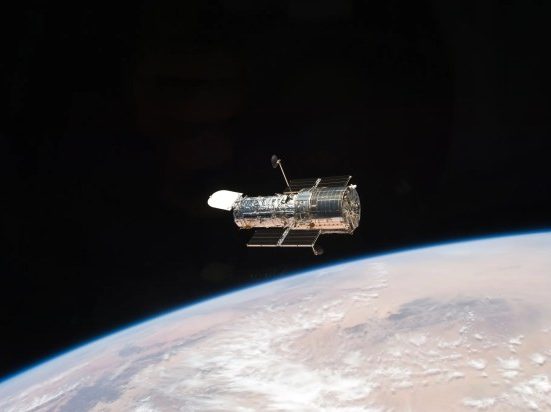
POT
When it comes to astronomy in space, it's sometimes easier to build rockets than to fund the science.
On July 25, the U.S. Senate announced a proposed budget for NASA for next fiscal year (fiscal year 2025). Under the new bill, NASA would receive a $25.434 billion increase, above The agency's request $25.383 billion and in line with incremental annual growth over the past decade. (NASA still doesn't take up much space, at about 0.5% of the overall federal budget.)
However, while at first glance the Senate budget seemed to bring good news for traditional astronomy programs such as the Chandra X-ray Observatory and the Hubble Space Telescope, a closer look leaves the future of these iconic space telescopes uncertain.
What's next for Hubble and Chandra?
The Senate bills follow the release of the House of Representatives' own spending bills, which provided just $25.178 billion in funding for NASA, below the agency's request. However, while the Senate's larger budget is generally good news for NASA as a whole, the fate of legacy missions, and especially Chandra, is less clear.

NASA / SAO / CXC
Hubble and Chandra were launched as two of NASA’s great observatories, and are the only two still in operation. These iconic missions, which have served the astronomical community and the general public for 34 and 25 years, respectively, are also aging out: Hubble recently transitioned to a more limited scope. single turn mode operations in June, and Chandra has had to dealing with alternative solutions to address the declining performance of its primary detector over time. Despite these challenges, both missions continue to advance productive science.
The House spending bill, however, disagreed. It specified a 10% reduction in funding for Hubble, from $98.3 million in fiscal year 2024 to $88.9 million in fiscal year 2025, and even deeper 40% cuts for Chandra, from $68.3 million to just $41.1 million. The latter change It would leave Chandra without the funds to continue operations..
NASA formed a review panel in response to that bill, looking into Possible ways forward The panel concluded that the smaller Hubble cut left some options for the iconic observatory: The mission could end all infrared operations, leaving them to JWST, or it could cut funding for astronomers who use Hubble’s capabilities for their science. It could also operate with a smaller staff, though that could prove risky if problems arose.
But deeper cuts to Chandra left little choice: The team would have to begin moving toward winding down operations at the observatory as early as 2025. And that would leave the United States without a flagship space mission to study X-rays, a type of astronomy that can only be done from space. (NASA has other, smaller X-ray missions, such as NUSTAR and NICER, and it collaborated with Japan on the XRISM mission, but none of them see the universe with eyes as keen as Chandra’s.)

NASA / Rogier Windhorst (Arizona State University) / Hubble Mid-Ultraviolet Observation Team
Now, the new Senate proposal makes future options for both Chandra and Hubble less bleak. The bill includes appropriations for both observatories, specifying “no less than” $98.3 million for Hubble (the same as in fiscal year 2024, with no 10% reduction) and “up to” $72.1 million for Chandra, which could provide full financing for its operations.
This is great news for Hubble, but the wording leaves Chandra's options open.
“The term 'until' is supportive, but not a commitment,” said Patrick Slane, director of the Chandra X-ray Center. “Our discussions with NASA Headquarters have resulted in significant progress in preserving important foundational elements of the Chandra mission, but not all of its capabilities.”
The fight isn't over yet: The House and Senate spending bills will need to be reconciled before becoming law, and it's not known when that will happen. While the current fiscal year ends on Sept. 30, the fact that it's a presidential election year could mean that some final decisions on funding might not happen until November.
“As a result, NASA and other agencies have to look at individual bills and 'read the tea leaves' when making their budget decisions,” Slane says.
See More beautiful images of Chandra in a celebration of the observatory's 25th anniversary in the July 2024 issue of Sky and telescope.
The Moon, Mars and Beyond
The bulk of NASA’s budget is earmarked for exploration, and the House and Senate bills are more or less in agreement on this. The proposed funding supports the agency’s Artemis initiative, which includes several missions to and around the Moon and the International Space Station.
Both the House and Senate also support funding for the Near-Earth Object Surveyor to prepare the asteroid-hunting mission for launch in 2028.
In addition, the spending bills agree that Mars sample return mission in trouble The House bill offers $650 million for the mission in fiscal year 2025, with a launch no later than 2031, while the Senate version instead encourages NASA to “select a realistic mission architecture” and would then fund what NASA needs to make that happen. The selection and cost estimate would be submitted within 30 days of the bill being enacted.

NASA / JPL
Tim will explain what the final budget resolution will bring, as the fate of traditional observatories hangs in the balance.








Leave feedback about this